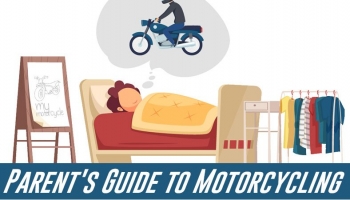How To Tie Down a Motorcycle – Strapping It Down Properly
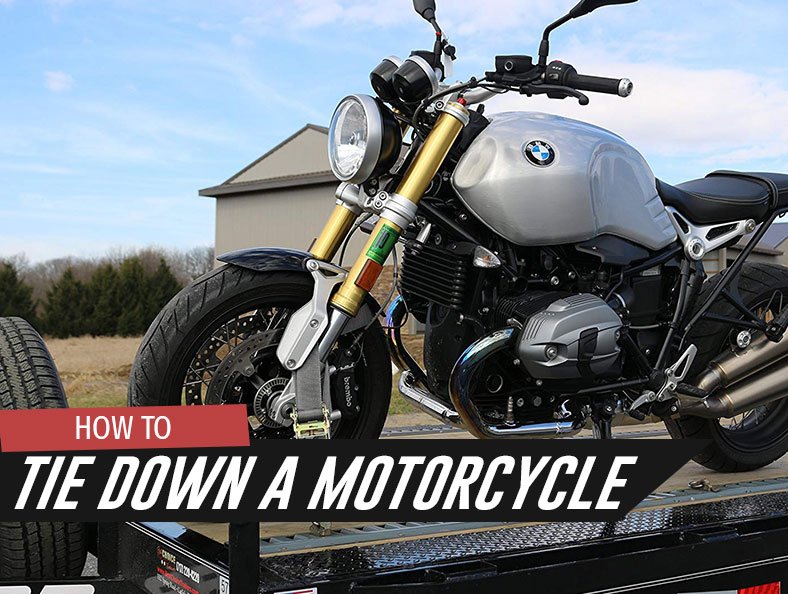
If you’re a bike owner, it’s crucial you learn how to tie down your motorcycle. It’s something that will come in handy sooner than later in case of a flat tire or a cross-country move.
Incorrect tying might result in your bike falling out of the trailer or truck while you’re transporting it. To prevent this, you should have the right gear and know how to use it to secure the motorcycle into the truck bed.
Take a moment and read our step-by-step guide as we explain the best ways of doing this as well as some important considerations.
For more info on how to do the actual transport, see this article.
Different Styles of Tie-Downs
Ratchet Style
Ratchet snaps use friction created by the strap when it passes through the buckle holding the strap in place. They operate like camp buckle tie-downs but have a ratchet buckle instead of a cam one. These are easy to find and simple to work with regardless of the bike you have.
More Reading: 8 Top Rated Tie Down Systems for Motorcycles
Cam Buckle Style
Cam buckles use friction that the strap creates as it passes through a spring-loaded buckle. These are quite strong and reliable while they’re also easy to use. Much like the ratchet tie-downs, cam-buckle tie-downs allow you to secure the motorcycle and bump up the tension to reduce shock loading.
Different Approaches
6 vs. 10 Tie-Downs
Tying depends on the actual bike you have although you should always use the frame as an attachment point. For most street motorcycles, two ties in the front and two on either side is quite adequate and enough. Still, if you’re not confident with that, you can use four in the front and two in the back for added security.
How to Tie It Down
The first thing to do is to install a motorcycle wheel chock towards the front of your truck. It’s a wedge of metal that you place in front of your front wheel to prevent it from moving forward.
Prepare your tie-downs of choice and position the straps so they can pull the bike in towards the chock.
Use a ramp to push the motorcycle up into the truck. You should have someone help you with this especially if you have a large and heavy bike.
Push the front wheel into the wheel chock and wrap soft loops around the left and right side handlebars. These soft loops will keep the hooks of the ratchet straps from scratching your motorbike.
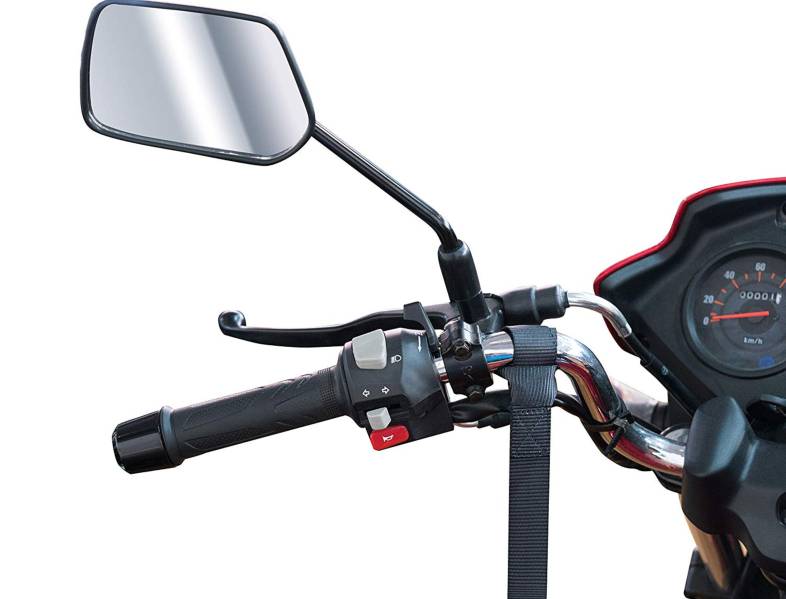
Hook the straps to the other end of the soft loops. If you got quality ratchet straps, they should be able to keep your bike firmly into place.
Pull the straps and attach the other end to a secure point on your trailer or truck before you tighten them. Now, pull the slack out of one of the straps and tighten it slowly and carefully. Do this on all the other ratchet straps.
The key is in pulling each strap tight enough, so your motorcycle stands upright. It should be secured into place and unable to wobble and move excessively.
Since all bikes are different, you should find a stable part on either side in the back. It has to be a sturdy part such as the frame. Wrap soft loops around the components and attach the ratchet snaps. Pull the strap and attach it to the truck.
Pull the slack from the straps and make sure to double check them all before hitting the road.
Special Considerations
By Vehicle Type and Equipment
Think about the vehicle in which you’ll be transporting your motorcycle. The best way to carry a bike is in a trailer, truck, cargo container or hitch carrier.
Truck
Transporting in a truck is the easiest and so is tying your motorcycle in such vehicle. You need a ramp to push the bike on. Once it’s up, use the tie-downs of your choice to secure it in the way we explained above.
Trailer
The most important is to find a suitable trailer since not all of them can actually hold a bike securely. You’ll need ratchet snaps and wheel chock to tie down the motorcycle in a trailer. The process is similar to the one we explained although it’s up to you to find the secure attachment points.
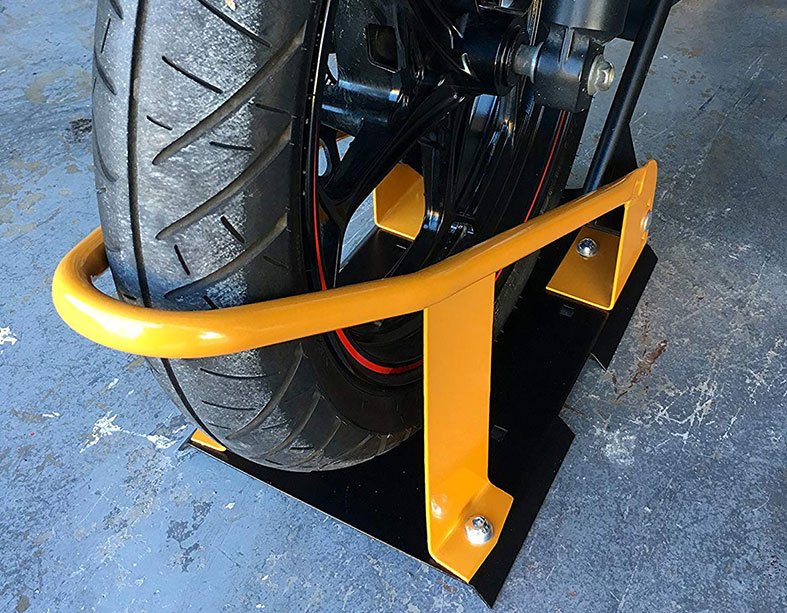
Cargo Container/Portable Storage
Cargo containers and portable storage vehicles are probably the best for this type of transportation. If you rent one, you might even get the needed tools and accessories along with it so you can secure the motorcycle with ease.
Hitch Carrier
Tying to a hitch carries shouldn’t be too complicated although people fear this method the most. It’s a good option to go for if you’re driving an SUV and have some experience in operating with the hitch carrier attached to it.
Helpful Tips
One of the most important things to check is if the attachment points on your truck or trailer are actually structural parts of its body. All those points must have the same capacity as your tie-downs for best results.
You can use as many straps as you want to, but there’s no need to go crazy with them. Using at least two is quite enough although four might be better for most bikes. You’re good to go as long as you secure both the front and the back.
It’s also crucial you ensure all connections are soft and not damaging any parts. Every component affects the components it’s attached to which is something people often forget when tying their bikes. Metal to metal might result in damage and even breakage of some parts.
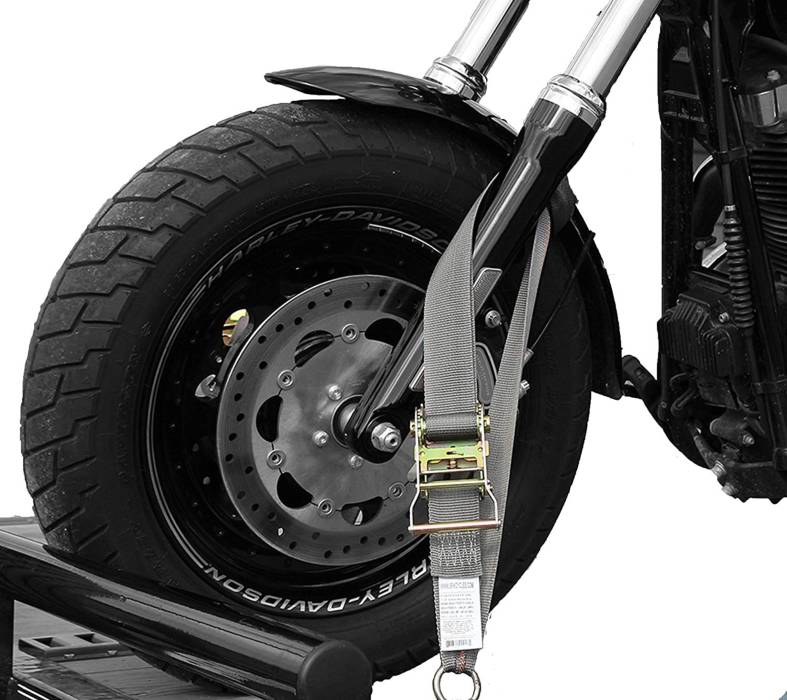
Another thing to keep in mind is the manufacturer’s rating of your tie-downs. All tie-downs have certified rating you should check before purchasing them to make sure they actually match your needs. It’s recommended that you have one strap to secure the entire weight of your bike since you might take sharp turns.
It’s also recommended you check the laws in the state you live in as well as all the states you’ll be passing through. Most regulations require you to secure the vehicle at four points under a 45-degree angle from the bike to the floor.
Of course, make sure to drive the truck or trailer carefully. Keep your eye on the vehicle in the back and pull over if you have the slightest feeling that something might be wrong. Tie-downs are strong and reliable, but many things can actually go wrong during transportation so it wouldn’t hurt to check from time to time.
Conclusion
Tying a bike isn’t that complicated as long as you use quality equipment and follow the simple steps we explained above.
You should only use reliable straps that haven’t been exposed to rain or sun for a long time. Take your time with the process and try not to rush it. It’s a serious matter you should handle carefully in order to transport the motorcycle safely.
Choose one of the transportation methods above and pick the type of tie-downs you want to use. Push the bike up the ramp and secure it the way we explained. Make sure to have someone help you since this is always easier to do with an extra pair of hands holding the motorcycle.






